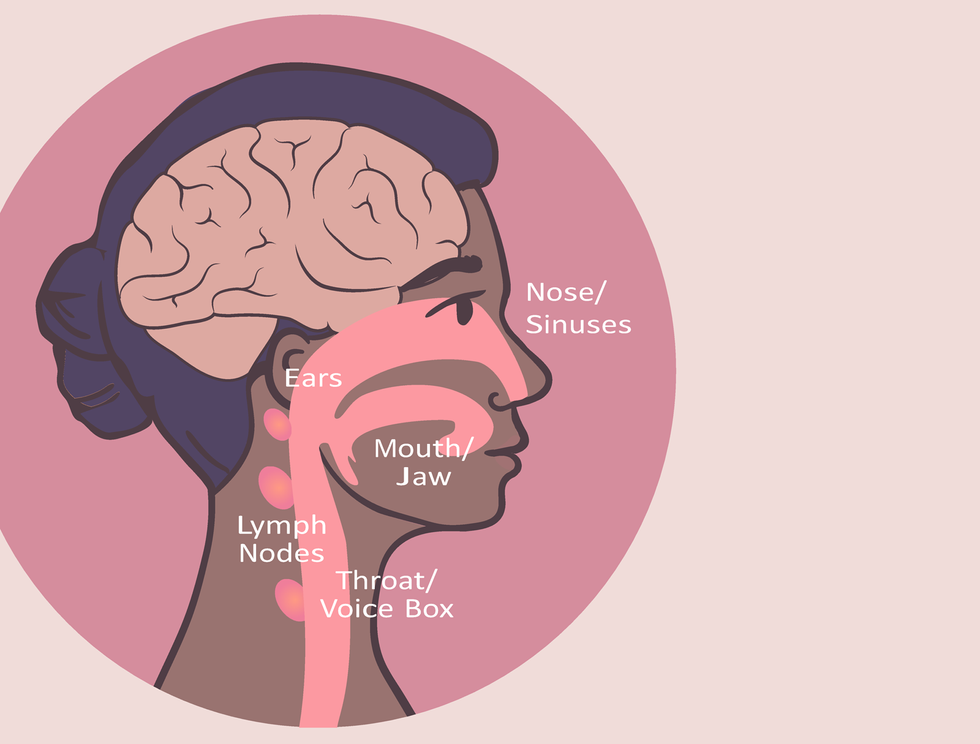

Where does head and neck cancer occur?
Head and neck cancer is cancer in the head or neck region.
Head and neck cancers account for approximately 4% of all cancers in the United States.
Men are more likely to get head and neck cancer, but it is also seen in women and people who have never smoked.
There are several different places where head and neck cancer can appear.
Larynx (voice box)
Laryngeal cancer = the larynx
Throat (pharynx)
Hypopharyngeal cancer = the lower part of the throat (next to and behind the larynx)
Oropharyngeal cancer = the middle section of the throat, including the tonsils, soft palate, and back of the tongue.
Nasopharyngeal cancer = the space behind the nose
Mouth
Oral cancer = the mouth, cheeks, lips, front of the tongue, and roof of the mouth.
Nose and sinuses
Nose (nasal cavity) = the openings behind the nostrils
Breast cancer (paranasal sinuses) = the air-filled spaces around or near the nose
Salivary glands
Salivary gland cancer = the salivary glands, the organs in the mouth and throat that produce saliva.
Neck
Head and neck cancers can spread to the lymph nodes in the neck and cause a mass.
It is important to detect head and neck cancer early. The survival rate for people with stage 1 or stage 2 head and neck cancer is between 70% and 90%.
If you have questions about head and neck cancer, talk to your health care provider.
This educational resource was created with support from Merck.







